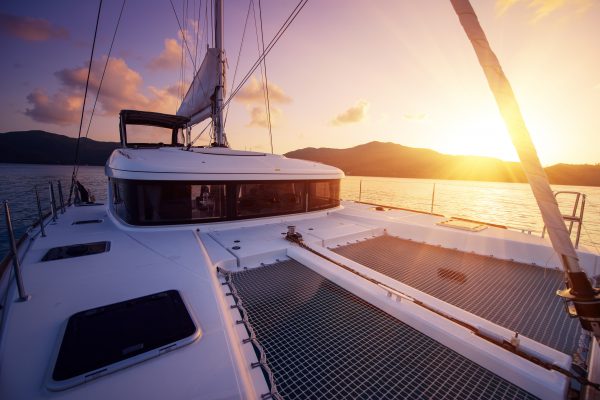Story by Phillip Berman / June 20, 2017


Many buyers who contact us these days develop some very strong personal preferences about a range of things: dagger boards versus keels, Yanmar versus Volvo, Flybridge versus Bulkhead Helms, etc. etc. Many buyers send us long “Must Have” lists.
One of the “Must Have’s” we are getting from some buyers these days is: “straight shaft engines.” Either there is a builder or two out there touting them because that is what they happen to offer, or some forum or blog or owner group stating their superiority, but we see a bit of an uptick in people who think straight shafts are the only way to go. What is clear to me is that most of these catamaran purchasers do not fully understand the advantages and disadvantages of straight shafts over sail drives or recognize how many limitations and negatives they pose for catamarans under 50 feet in length. Let me clear a few things up.

I have heard some internet chatter that straight shafts are better if you run aground, but I strongly disagree. If you run aground hard with shafts or sail drives and for any reason they are not protected by a keel, or mini keels, or a skeg, you are going to have a bit of a mess on your hands either way. One of the reasons I much prefer engines in their own watertight engine rooms is that if one does run aground and water enters the engine room from a broken shaft or sail drive leg, the water remains in the engine room, never enters the living quarters where water damage leads to major floor and woodwork repair in general.
The upshot of all this: Getting hung up on shafts or sail drives as a major purchasing concern is quite unwarranted. If having a shaft is something you are so convinced you must have, bear in mind you will live with all the advantages as well as the disadvantages noted above. More importantly, you will learn very quickly when you start to shop for a cat that 95% of the builders today have all concluded that the advantages of sail drives far outweigh their disadvantages on cats below 50 feet and are therefore superior for use in the smaller modern catamaran. I happen to agree.
Was a pleasure working with Andrew Hodgdon as buyers agent for our recent multihull purchase. Very knowledgeable of this space and for sure my first call buying or selling a yacht.
The multihull company has been great to work with. They were very helpful in every stage of our purchase from instill showings to purchase. Karl Reed, Andrew Hodgon and Andrew Holland were great sources of information and helped us find our dream Catamaran. Thank you Multihull!
Sold my L42 here with the excellent help and support of TMCs Croatia sales manager “Zee”. Despite my boat docked on the dry in Montenegro, in winter and in a challenging market, TMC and Zee managed to get her sold, managing the entire process from taking pictures and video’s, putting her out there on the web, prepping her and managing all for inspections….down to the final hand-over documents and managing the escrow payments when all boxes were ticked! Very professional, very helpful (Zee went above and beyond to make sure he delivers excellent service), responsive and successful. Thanks TMC!
We purchased our lagoon 410 through the multihull company, Andrew Hodgdon was the listing’s broker. From the start till the end of the process he was upfront honest and accommodating. Our situation was unique and required a bit more leg work. Andrew was always easy to get a hold of and willing to help. It was a pleasure working with a highly knowledgeable broker that values integrity. I highly recommend him.
Successful relationships cannot exist without it. At The Multihull Company we base every relationship on a firm commitment to earning and retaining our client’s trust.
Advice of any kind is valuable only when grounded in hard-won expertise. It too, must be trustworthy. Trust and expertise define the heart and soul of The Multihull Company. We are a team of skilled professionals who thrive on providing expert, trustworthy advice and service to catamaran and trimaran sailors around the globe.
Read More